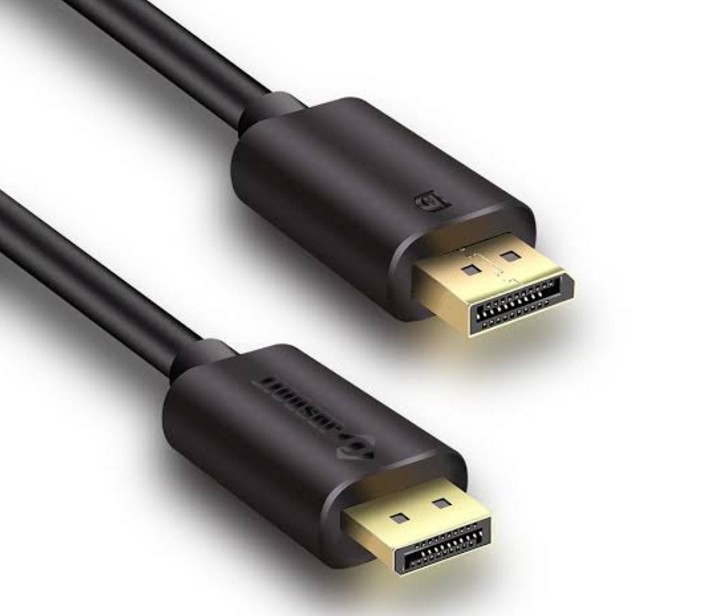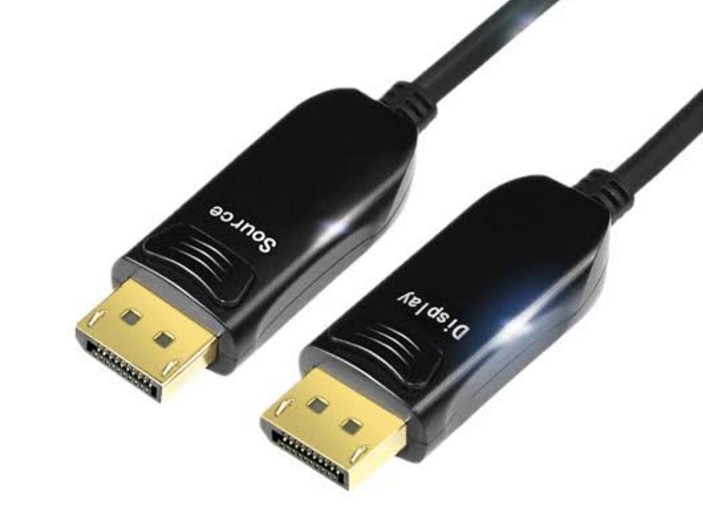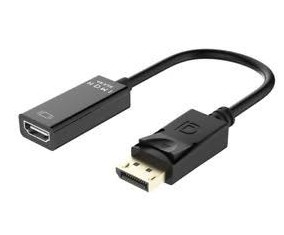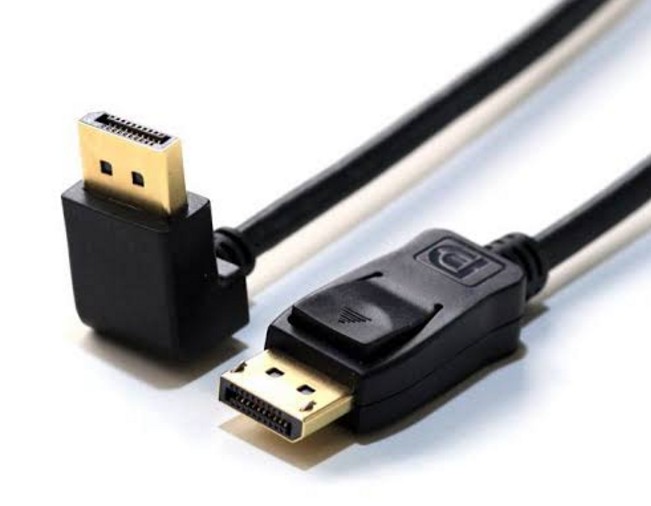If you asked the question of what displayport cable do I need for 144Hz you are in the right place. This article will cover everything you need to know about DP cables and provide you with detailed info to help you out.
DisplayPort aka DP is one of the most advanced digital display interfaces available right now. It can transfer audio, video, and even USB data. It is replacing the old VGA and DVI interfaces. Also, it has some other great features like supporting a higher refresh rate and higher resolution. As a result, it has become one of the most popular display interfaces in recent days.
But what DisplayPort cable do you need for 144Hz? If you are looking for the answer to this question as well. We have got you covered. Because we will be sharing all the information you will need to know about DisplayPort cable and interface in this very post.
So, let’s get started…
What DisplayPort Cable Do I Need For 144Hz – Does the Cable Matter?
This one of those ‘Yes or No’ situations. First of all, you should know that the most important thing about the cable in this instance would be the quality of the cable. And using a high-quality DisplayPort cable does matter.
But another important thing other than the quality of the cable would be the DisplayPort version. You know there are several versions of the DisplayPort interface available. At the moment, the most common one is DisplayPort 1.4. As a result, the majority of the DisplayPort cables are also compatible with the DisplayPort 1.4 interface. That is why if you are going to buy a new DisplayPort cable right now, it will probably be enough for 144 Hz.

And we can also say that all standard DisplayPort cables will be able to handle 144 Hz easily. So, the clear cut answer to your question is Yes, any high-quality DisplayPort cable would be to support 144 Hz.
However, according to an official statement of VESA (Video Electronics Standards Association), there are a lot of low-quality cables have flooded the market. Even VESA purchased some of those cables for testing purposes. And, after experiments, they have found out that a lot of those low-quality DisplayPort cables are configured improperly. So, those cables are not suitable in any sense.
To make sure, you use the best quality cables, VESA has implemented a certification process. And, they have tested DisplayPort cables from various companies. All the cables that passed the DisplayPort certification test are listed on their official page. You can check the list before purchasing your next DisplayPort cable.
Added to that, VESA also stated that the DisplayPort cables from all of the top-tier computer accessories manufacturers have passed their test. So, if you are buying from a well-known brand or just using the cable that came with your monitor (assuming you have bought the monitor from a top-tier brand), you are safe.
What DisplayPort Cable Do I Need for 144 Hz?
As we have already told you that you don’t need any specific DisplayPort cable for 144 Hz. Any high quality or VESA certified DisplayPort cable would do. However, the version of the DisplayPort interface has a lot to do with the performance. There are several versions of the DisplayPort interface that can be found till date. And, not all of them are suitable for 144 Hz in high resolution. Let’s elaborate…
DisplayPort 1.0-1.1a:
The DisplayPort 1.0 came out back in 2006. Since then, there were 2 more versions of the DisplayPort 1.0 have been released. Those cables could only support 1.62 to 2.70 Gb/s per lane. Thus, the DisplayPort 1.0-1.1a are not suitable for 144 Hz. Lucky for you, these are now discontinued.
DisplayPort 1.2:
In 2010, we have seen the DisplayPort 1.2 replacing the DisplayPort 1.0-1.1a. It could support up to 5.40 Gb/s per lane. As a result, it has become the first DisplayPort version that supported 144 Hz. So, if your monitor comes with a DisplayPort 1.2 input, you will be able to play games at 144 Hz with a resolution up to 1440p without any issues.
DisplayPort 1.3:
The DisplayPort 1.3 version came in 2013. And, it could support up to 8.10 Gb/s per lane. However, as the DisplayPort 1.2 could support 144 Hz @ 1440p at the moment, manufacturers mostly used DisplayPort 1.2 as a result. Thus, the impact of DisplayPort 1.3 was not that high in the market.
DisplayPort 1.4:
In March 2106, the DisplayPort 1.4 version has been released. It had almost similar specs to the DisplayPort 1.3. But there were some improvements in the maximum sample rate, compression, and the maximum audio channels field. As a result, DisplayPort 1.4 has become one of the most commonly used DisplayPort interfaces till date.

If you have bought your monitor recently, you might have a DisplayPort 1.4 input. Now, the DisplayPort 1.4 can support up to 4K or 3840 x 2160 pixels at 120 Hz. But, it can easily handle 144 Hz at a resolution up to 1440p.
DisplayPort 2.0:
The DisplayPort 2.0 is the latest edition of the DisplayPort. It was released back in July 2019. So, it is not yet widely available. And, the DisplayPort 2.0 has come with a lot of improvements. Now, the DisplayPort 2.0 can support up to 15360 × 8640p or 16K at 60 Hz for a single display. Thus, it can definitely support 144 Hz even at 4K. Matter of fact, the DisplayPort 2.0 can handle dual 4K monitors at 144 Hz.
Your PC Configuration Matter:
In addition to the types of cable and input, your entire system matters as well. It doesn’t matter whether you have the DisplayPort interface on your monitor or not if you don’t have a GPU with a DisplayPort as well. Luckily, most of the modern GPUs come with multiple ports like HDMI, DVI-D, and DisplayPort.
Also, to handle 144 Hz at a resolution of 1440p will require a high-end graphics card as well. If you don’t own one, then you can’t get the experience of the 144 Hz refresh rate regardless of the type of cable you have.
Cables that are Compatible with 144 Hz:
There are several other cables that are compatible with 144 Hz. For instance, the HDMI 1.2 + can handle 144 Hz with ease. However, the HDMI 1.2 can support 144 Hz at a resolution up to 1080p. With the release of HDMI 2.0, it can support 144 Hz at 1440p resolution. On the other hand, HDMI 1.4 can handle 144 Hz at 1440p but with compression enabled.
Regarding DVI cables, you will need a DVI Dual-link interface for running 144 Hz @ 1080p resolution. So, if you want to run 144 Hz with a higher resolution than 1080p, you can’t achieve that with DVI input.
Also, any mini DisplayPort and USB Type-C can handle 144 Hz at several resolutions as well.
You can Use Adapters:
If you have a DisplayPort input on your monitor yet your GPU doesn’t have one, you can use adapters to solve the issue. There are different types of display adapters are available. For instance, you can get an HDMI to DisplayPort adapter, DisplayPort to HDMI 2.0 adapter, or DisplayPort to Dual-Link DVI-D and vice versa.

If you Use a Low-Quality Cable:
We have already mentioned that you should not use a low-quality cable anyway. But why? Here are some reasons why you shouldn’t use low-quality cables.
Audio & Video Data might Corrupt:
When VESA tested several low-quality DisplayPort cables, they found out that those might corrupt both or either of the audio and video data. Thus, they advised against using those cables.
Sudden Frame Rate Drop:
Even if a low-quality cable can run 144 Hz, it would not be able to handle that much data all the time. And, when that occurs, you will also face frequent frame rate drops. As a result, it will hamper your gameplay and overall experience while using a 144 Hz monitor. Thus, it is always advisable to buy a high-quality DisplayPort cable.
Monitor Stuttering:
Another outcome of using a low-quality DisplayPort cable would be stuttering or freezing on the monitor screen. When this happens, you will notice the image on your monitor lags a little bit from time to time. Also, the monitor might go dark all of a sudden as well due to using a low-quality cable.

PC or Monitor might be Damaged:
VESA also stated that the worst-case scenario of using a low-quality DisplayPort cable is that your PC, monitor, or laptop might get damaged. As those cables come with improper configuration, it might even damage the computer or monitor permanently.
Some Tips to Choose the Ideal DisplayPort Cable:
Here are some things you should consider before buying the next DisplayPort cable of yours.
- Buy your DisplayPort cable from the major or prominent brands
- It is best to use the supplied DisplayPort cable with your monitor
- You can also check the list of the VESA certified cables, and buy one of those
- Make sure, you have the perfect connector type at each end of the DisplayPort cable
- You should know the version of the DisplayPort interface your monitor and GPU comes with
- The cable length should be another important factor to consider
Before We Go:
So, any DisplayPort cable can do 144 Hz except for DisplayPort 1.0-1.1a. But those are not available in the market right now. And, always, keep in mind that you should not buy any off-brand or low-quality DisplayPort cables for saving a few bucks. In the end, it might damage your computer and monitor.
Also, VESA has made it easy to choose the good DisplayPort cables by listing the VESA certified cables for the consumers. You can follow that list or you can buy from any of the reputed companies to be safe and have the best experience of 144 Hz on your system.
So, which DisplayPort version you are using right now? You can tell us in the comment section down below!